First Experiences of Pilot Clinical Studies on Boron Neutron Capture Therapy for Recurrent Gastrointestinal Cancers Using an Intravenous Injection of 10BPA
- PMID: 40294997
- PMCID: PMC12041971
- DOI: 10.21873/invivo.13948
First Experiences of Pilot Clinical Studies on Boron Neutron Capture Therapy for Recurrent Gastrointestinal Cancers Using an Intravenous Injection of 10BPA
Abstract
Background/aim: Boron neutron capture therapy (BNCT) is a novel treatment that induces targeted tumor cell damage through the selective accumulation of 10B compounds in cancer cells followed by the production of alpha and lithium particles using thermal neutron irradiation. Despite its potential, clinical applications of BNCT for recurrent gastrointestinal cancers remain limited. This study presents the first pilot clinical evaluation of BNCT using intravenous boronophenylalanine (10BPA) for such cancers.
Case reports: Four patients with recurrent gastrointestinal cancers were enrolled in this phase I-II clinical study. All had tumors refractory to standard treatments, including surgery, chemotherapy, and radiotherapy. BNCT was performed using thermal neutron irradiation at Kyoto University Research Reactor. 10BPA was administered intravenously at 400 mg/kg, and no severe adverse effects were observed. Tumor responses varied, with one patient achieving partial response and three demonstrating stable disease at three months post-treatment. Notably, BNCT alleviated cancer-related symptoms, such as pain and nerve compression, improving patients' quality of life. Dosimetric evaluations confirmed effective tumor doses with acceptable exposure to surrounding normal tissues.
Conclusion: BNCT is a promising modality for recurrent gastrointestinal cancers, offering symptom relief and potential antitumor effects. Its safety and feasibility were demonstrated in this study. Future research should explore fractionated BNCT and combination therapies with immunotherapy or targeted agents to enhance efficacy further.
Keywords: Alpha particle; Boron neutron capture therapy (BNCT); Boronophenylalanine (10BPA); atomic reactor; recurrent gastrointestinal cancers; thermal neutron.
Copyright © 2025, International Institute of Anticancer Research (Dr. George J. Delinasios), All rights reserved.
Conflict of interest statement
The Authors have no conflicts of interest to declare in relation to this study.
Figures
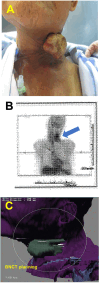

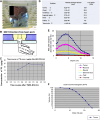

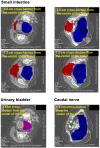
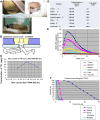

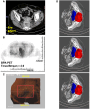




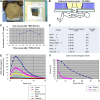

Similar articles
-
Therapeutic Effect of Boron Neutron Capture Therapy on Boronophenylalanine Administration via Cerebrospinal Fluid Circulation in Glioma Rat Models.Cells. 2024 Sep 25;13(19):1610. doi: 10.3390/cells13191610. Cells. 2024. PMID: 39404374 Free PMC article.
-
Boron neutron capture therapy (BNCT) for glioblastoma multiforme: a phase II study evaluating a prolonged high-dose of boronophenylalanine (BPA).Radiother Oncol. 2008 Aug;88(2):183-91. doi: 10.1016/j.radonc.2006.04.015. Epub 2008 Mar 11. Radiother Oncol. 2008. PMID: 18336940 Clinical Trial.
-
Boron neutron-capture therapy (BNCT) for glioblastoma multiforme (GBM) using the epithermal neutron beam at the Brookhaven National Laboratory.Int J Radiat Oncol Biol Phys. 1998 Mar 1;40(4):829-34. doi: 10.1016/s0360-3016(97)00891-2. Int J Radiat Oncol Biol Phys. 1998. PMID: 9531367 Clinical Trial.
-
Current status of boron neutron capture therapy of high grade gliomas and recurrent head and neck cancer.Radiat Oncol. 2012 Aug 29;7:146. doi: 10.1186/1748-717X-7-146. Radiat Oncol. 2012. PMID: 22929110 Free PMC article. Review.
-
Evaluation of sodium borocaptate (BSH) and boronophenylalanine (BPA) as boron delivery agents for neutron capture therapy (NCT) of cancer: an update and a guide for the future clinical evaluation of new boron delivery agents for NCT.Cancer Commun (Lond). 2024 Aug;44(8):893-909. doi: 10.1002/cac2.12582. Epub 2024 Jul 8. Cancer Commun (Lond). 2024. PMID: 38973634 Free PMC article. Review.
References
-
- Locher GL. Biological effects and therapeutic possibilities of neutrons. Am J Roentgenol. 1936;36:1–13.
-
- Kageji T, Nagahiro S, Kitamura K, Nakagawa Y, Hatanaka H, Haritz D, Grochulla F, Haselsberger K, Gabel D. Optimal timing of neutron irradiation for boron neutron capture therapy after intravenous infusion of sodium borocaptate in patients with glioblastoma. Int J Radiat Oncol Biol Phys. 2001;51(1):120–130. doi: 10.1016/s0360-3016(01)01605-4. - DOI - PubMed
MeSH terms
Substances
LinkOut - more resources
Full Text Sources
